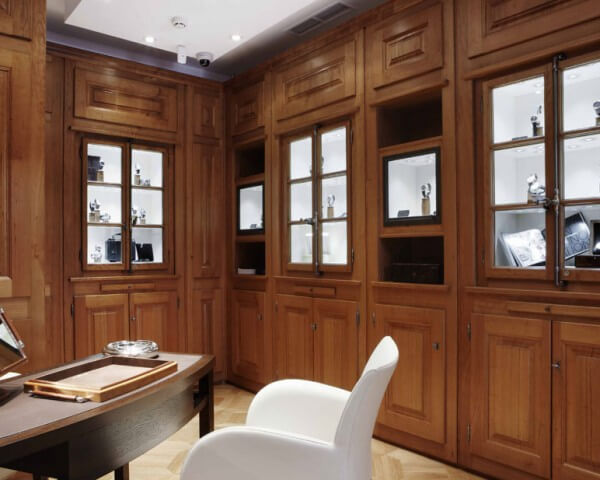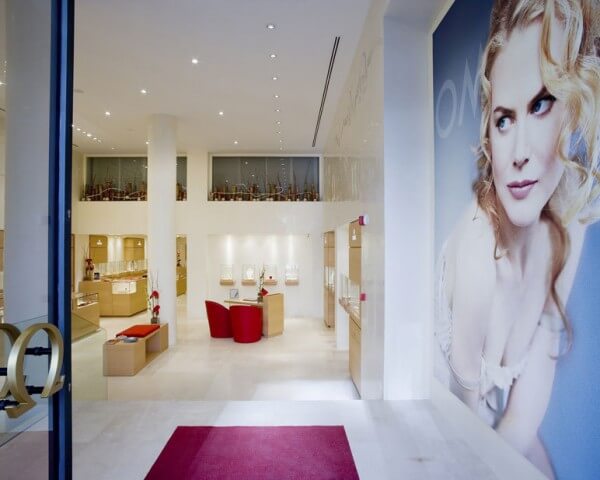Such alarming, even chilling macroeconomic indicators leave no room for doubt. Spain, that dynamic country which in a few short years has earned itself a place in the sun, and successfully implemented an exemplary modernisation process, has hit the wall. Furthermore, high unemployment (13% or close to 3 million jobless) and negative growth at the end of last year give every indication that recession is just around the corner.
And yet Spain has always had its quirks, often a prisoner of its own clichés. Despite the grim climate and a jumpy economy, the advent of democracy has taught the Spaniards about consumption, and they have been quick to learn! Over the past ten years, the country has even transformed itself into a Mecca for luxury goods. Like fast cars and haute couture, Fine Watches have come to symbolise wealth and position. A watch is no longer worn simply to tell the time but also to underline its owner’s social status. This, combined with rising purchasing power, Spain’s healthy economy of recent years, and a more affluent, cultivated, cosmopolitan society have contributed to the emergence of a booming market for luxury in general, and Fine Watches in particular.
Ribbon-cuttings galore
Traditional jeweller’s stores have grown larger and more modern. They have dusted down their displays and started to show new high-end brands which the general public had yet to discover. More importantly, they have managed to bring about these transformations with no obvious repercussions on prices which, while often exorbitant, aren’t dissuasive. In Spain as in the rest of Europe, and elsewhere in the world, watches have considerably increased in price, yet this hasn’t proved a barrier to sales. Far from it. As surprising as it may seem, business has thrived. Sales have increased year after year, as brands old and new have jostled for their place in the Spanish sun.
The paradox today is that while crisis has gone from a distant menace to harsh reality, and as consumption plummets (down 40% in the automotive sector, for example), it appears Fine Watches are emerging unscathed. It even seems brands had planned ahead for the end of a golden era, intent on preserving a healthy bottom line. Witness Madrid, and the string of new and renovated own-name boutiques that have been opening there these past few months, not forgetting efforts made by traditional jewellery retailers.
Inside Madrid's golden mile
At the heart of Madrid’s milla de oro (at 13, Calle José Ortega y Gasset), Blancpain has reconstructed its Le Brassus workshop inside a peaceful and welcoming boutique whose wainscoted walls are panelled in noble wood, brought directly from Switzerland and set lovingly into place by Swiss craftsmen. In barely twenty square metres, they have managed to recreate the peaceful atmosphere of the original workshop in the Vallée-de-Joux. Just next door, at number 11, Panerai has cut the ribbon at its first Spanish store. Stretching over 100 square metres, it captures the spirit of the first Florentine bottega and honours the sea, a defining element in the Italian brand’s history.

Just metres along, and Cartier stands on the corner of the ultra-chic Calle Serrano, which is home to other prestigious jewellers such as Chopard and Bulgari. Its newly-extended flagship store has become something of an attraction for its regular exhibitions of exclusive jewellery. The latest to date presented sketches by Louis Cartier for Russian tsars and aristocracy at the turn of the last century. Previously, these drawings took pride of place inside the Russian Embassy in Madrid.
A wealth of opportunities
Over on the other side of Ortega y Gasset stands a 400 square-metre building, opened just two years ago by Omega and still a reference for aficionados of the brand. The facade was recently adorned with an unmissable gigantic poster of James Bond sporting a superb Omega watch. Fifth Avenue’s iconic jeweller Tiffany & Co has also made Madrid its home from home, inaugurating 500 square metres just a little further down the street. The jeweller celebrated its arrival in true New-York style: the entire area was closed to traffic throughout festivities, and illustrations of Tiffany’s legendary blue boxes bloomed all over Madrid.

Just a stone’s throw from what Madrid’s inhabitants consider its premier district, at 6 Calle Don Ramón de la Cruz, Audemars Piguet recently opened what it describes as a “club for admirers of Fine Watches.” In what is an undeniably innovative concept, sales, the principal activity of this 400 square-metre space, go almost unnoticed. Perhaps because, in addition to soft background music, subtle fragrances and an avant-garde decor, the boutique features a bar serving champagne and freshly-squeezed juices, a cigar room, a library of books on Fine Watches and related subjects, a watchmaker’s workshop, an exhibition space showing vintage pieces by the brand, and a round table almost two metres across, in the form of a watch mechanism, where diners can enjoy Spanish and international cuisine. With so much on offer, one can only hope the crisis won’t prevent us from enjoying it all.
















